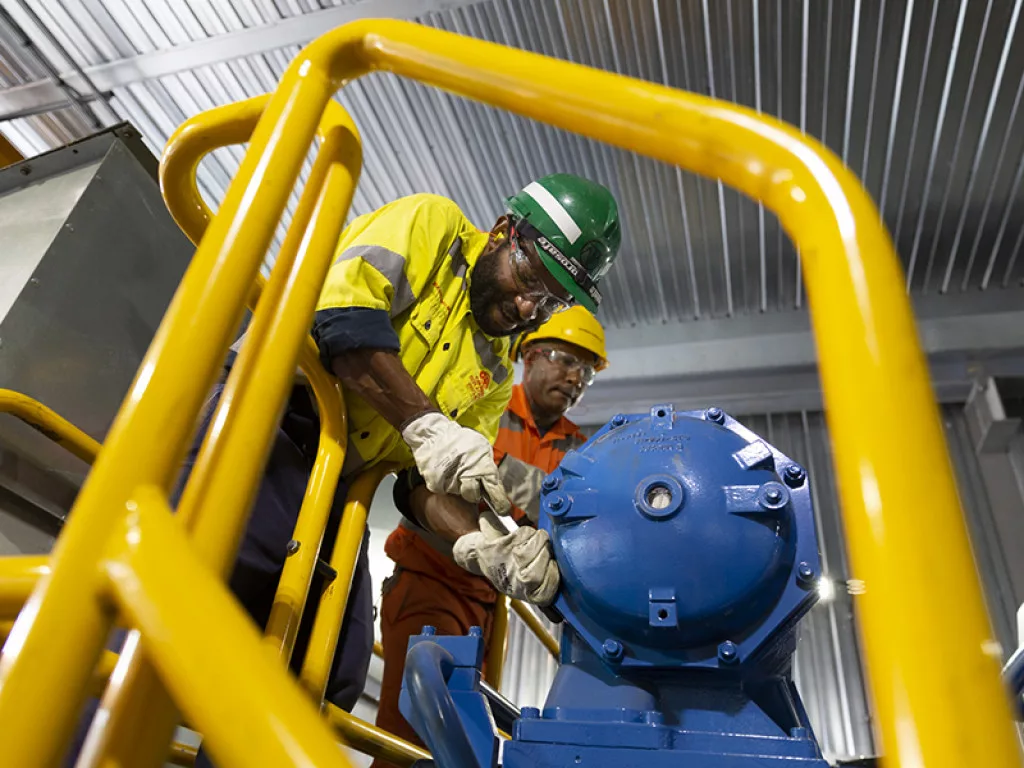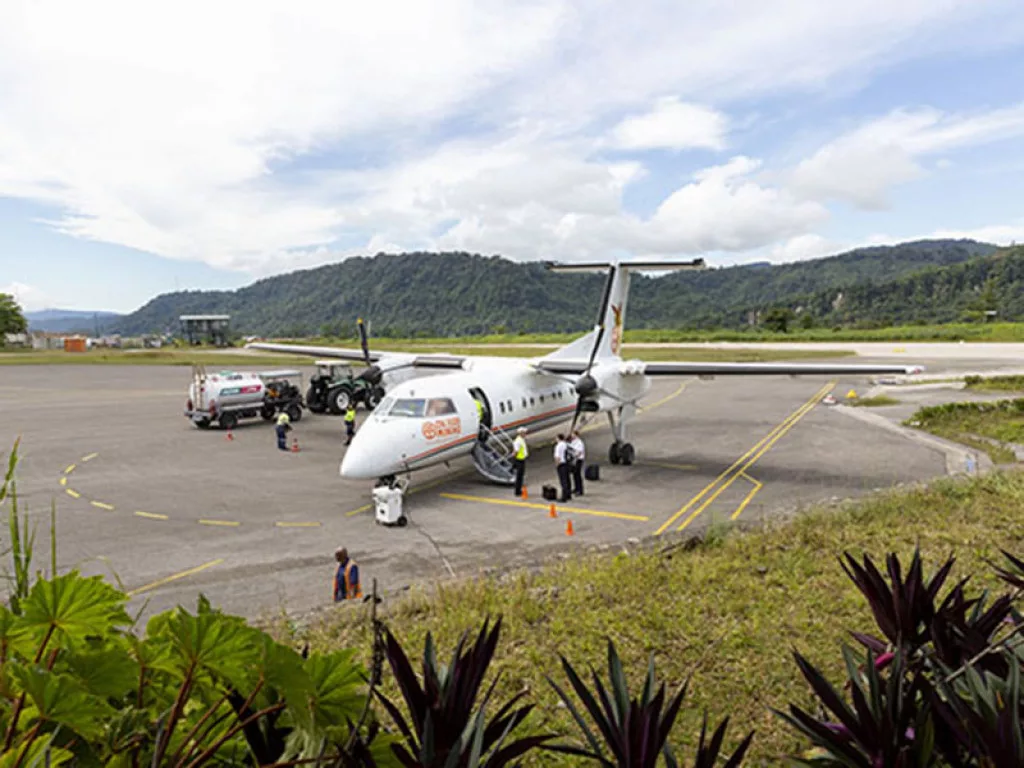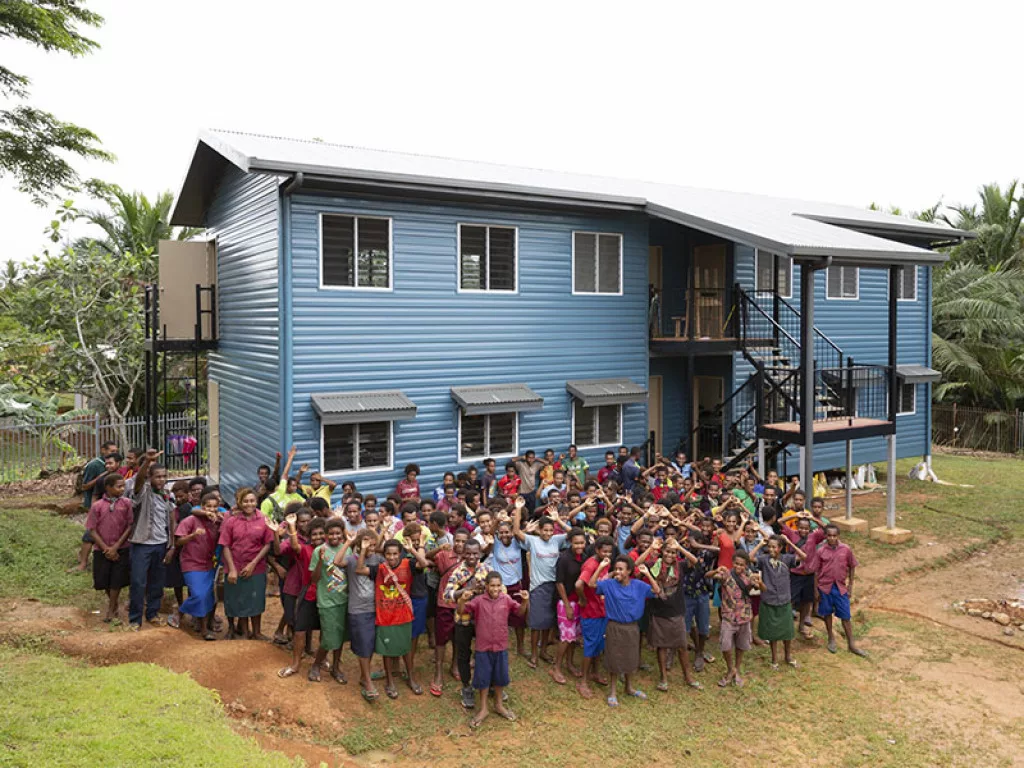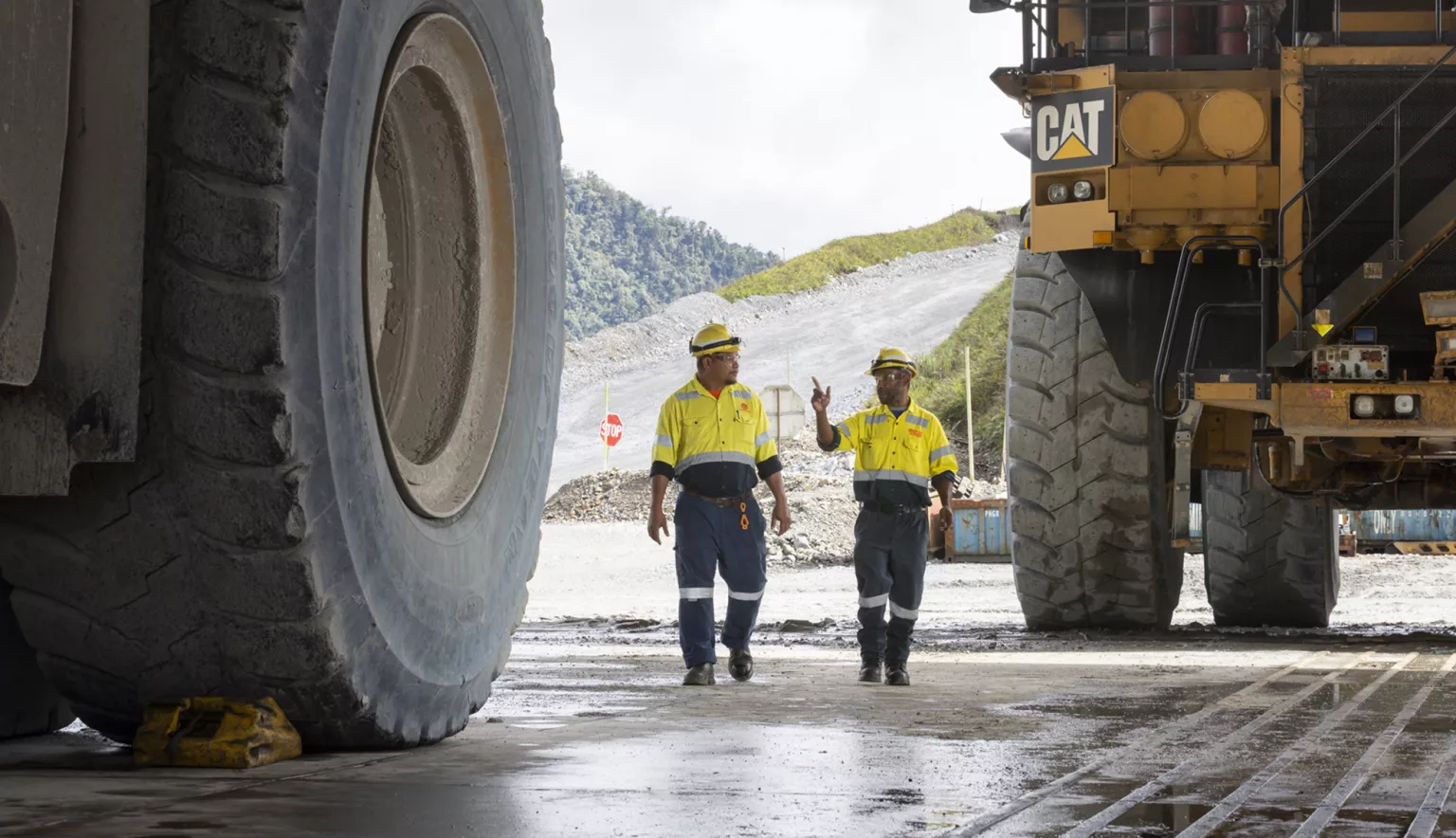


THE HISTORY OF OK TEDI
Ok Tedi originally goes back to 1963 when copper mineralisation was first found near the current mine site when a government patrol made contact with the Min people of Star Mountain.
In 1968, the Fubilan Copper-Gold deposit was discovered, and the Kennecott Copper Corporation began exploratory drilling.
Following the withdrawal of Kennecott in 1975, BHP secured a mining lease of the area and as part of an international consortium, began mining feasibility studies culminating in a detailed report to the PNG Government in 1979.
Ok Tedi began as an entity to operate the project in 1981 and was formed from a partnership between BHP, the PNG Government, Amoco Corporation and Inmet Mining Corporation.
Ok Tedi mine was a green-field operation remotely located in the Western Province of PNG that necessitated the development of all the infrastructure, including roads, housing, airstrips, power supply and a port located at Kiunga on the Fly River to ship supplies in, and copper-gold concentrate out to market.
Ok Tedi began mining operations in 1984, initially as a gold mine to exploit the gold-rich cap on the Mount Fubilan deposit, and then as a copper-gold mine in 1987 for the majority of the ore body. In 2002, BHP exited Ok Tedi, announcing its interest to the PNG Sustainable Development Programme (SDP).
10 years later in 2012, Ok Tedi became a fully owned Papua New Guinea entity when Inmet Mining Corporation shares were purchased by Ok Tedi. The following year, Ok Tedi became a majority state-owned enterprise when the SDP shares were cancelled, and the government of PNG scaled its direct ownership to 87.8 percent.
Interestingly, Ok Tedi mine was due to be closed in 2010. However, following extensive mining studies which resulted in the further definition of the Mt. Fubilan resource, Ok Tedi sought approval to continue operations as a producer of copper, gold and silver until 2025. The continuation of the mine was agreed and supported by the communities impacted by the mine’s operations.
Today, Ok Tedi has the right employees, with the right skillset, in the right positions to respond to current global challenges. The organisation has a motivated, committed workforce and possesses world-class rosters, terms and conditions and accommodation that provide robust productivity and results for the PNG people and the economy. The company is renowned as a sustainable, efficient and well-regarded operating firm that delivers value to stakeholders and the PNG economy.
The OTML registered office and senior management team are located at Tabubil. Operational sites are located in Tabubil, Kiunga, Bige, with support offices in Port Moresby and a marketing and logistics office in Brisbane, Australia. Ok Tedi Mining exports copper concentrate containing gold and silver to smelters in Germany, India, Japan, South Korea and the Philippines.
MINING OPERATIONS
Mining of the Mt. Fubilan Ore Reserves is undertaken through a large open pit operation through conventional drill and blast techniques, with shovel and excavator loading equipment. The current pit design and pit sequencing has been developed to maximise value while meeting environmental constraints agreed with mine-affected communities.
With up to 11 metres of rainfall per annum, incident rainfall and runoff contribute significant volumes of free water draining into the pit. Rainwater also permeates into the rock mass which contributes to instability as a result of increased pore pressure. Comprehensive monitoring of hydrological and geotechnical factors is introduced into its mining strategy and plans to ensure safe operations.
THE OK TEDI RIVER
Located in Papua New Guinea, the Ok Tedi mine is based near the headwaters of the river, sourced in the Star Mountains. Nearly the entirety of the river runs through the North Fly District of the Western Province of PNG, however, the river crosses the international boundary with Indonesia for less than one kilometre. It is the biggest settlement of the Western Province, and the second largest tributary of the Fly River.
PROCESSING
Ore is mined and processed at an onsite flotation processing plant capable of treating around 24 million tonnes per annum. The plant currently recovers copper, gold and silver into a saleable concentrate. The primary ore is crushed and ground using Semi Autogenous Grinding and Ball mills to a final grain size of approximately 180 microns. The finely ground material is treated in two mineral floatation circuits to extract the copper, gold and silver as a copper concentrate. A portion of gold is also separately captured through the utilisation of a gravity gold circuit.
Subsequently, the concentrate is then piped 156 kilometres south to the Kiunga port facilities located on the Fly River. The concentrate is dried, stored and shipped by barge down the Fly River to a storage vessel which is fundamentally anchored in Port Moresby’s Fairfax Harbour. It is then transferred to a silo and storage vessel before being exported using commercial shipping to customers in Japan, Philippines, Germany, South Korea and India where it is refined to produce copper metal and gold and silver bullion.
DEVELOPMENT AND EXPLORATION
Ok Tedi’s exploration strategy is primarily based around three core areas: enhancing its knowledge and mapping in and around its existing Mt. Fubilan pit, exploration of near mine locations and regional exploration. The current OTML exploration programme revolves around five exploration licences which covers around 680 kilometres.
In line with the reinvigorated exploration strategy that is focused on the near-mine environment where the mineralisation potential is highest and easily accessible, the majority of the exploration licences are located along the prospective Ok Tedi corridor.
This corridor is a deep-seated geologic feature that trends north-northeast through the Ok Tedi deposit into the West Sepik Province where currently, all known copper and gold mineralisation in the region is located.
Discovery and definition of additional mineral resources within the Special Mining Lease (SML) in close proximity to the processing plant remains an exploration priority. The exploration team have several near mine programmes at different stages. The primary aim is to grow the mineral resource base and subsequent ore reserves through focused, safe exploration. Immediate attention is on replacing resources mined from within the SML. This includes converting resources already drilled to the appropriate density in the East Wall of Mt. Fubilan pit to reserves and identifying other targets that can be proven up and converted into reserves.
Exploration in the Paris (West Wall South) and Sulphide Creek (New York and Wellington) areas, proximal to the current pit are delivering promising results. These areas are the current focus for near mine exploration to increase the mineral resource in the short to medium-term.
OTML has continued to explore outside of the SML as part of its wider regional exploration programme on granted leases. OTML holds a number of brownfields strategic exploration leases in the Western Province. The exploration effort has included the assessment of geophysical and geochemical data from various anomalies, mapping and sampling programmes and drilling of prospective targets.
The target areas include Townsville, Kauwol, Anju and Dorongo licences.




































